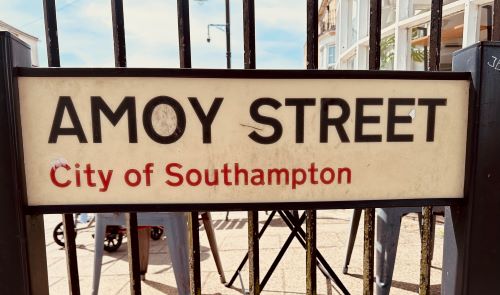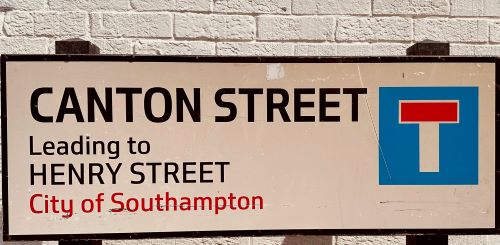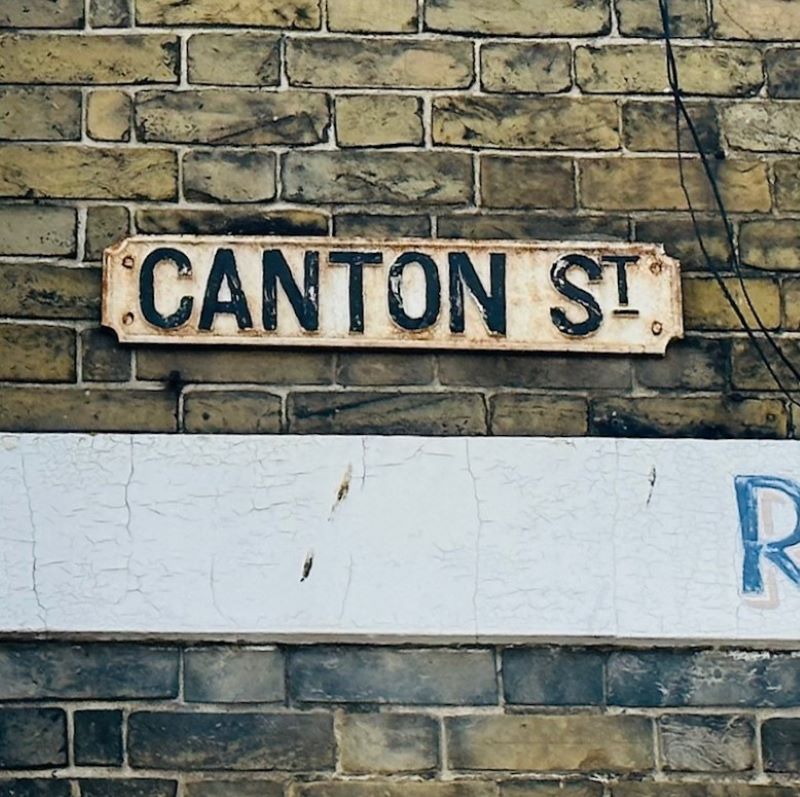by Martin Brisland.
When you walk through the Bedford Place area of Southampton, have you ever realised that some of the street names are linked to Britain’s ignoble colonial past and the East India Company?
Southampton was a minor port in the 1830s at the end of its time as a Spa Town.
Following the Industrial Revolution, Britain had manufactured goods for export. It wanted to increase trade with China but the Chinese were resistant to trade with the West.
The East India Company had surplus stocks of opium in their warehouses at Kolkata and made the very dubious decision to introduce it to the Chinese to subdue the population. The resulting widespread addiction in China caused severe social problems.
It was an astonishing episode – basically the East India Company was drugging a population into submission to further the British Empire.
Foreign traders, primarily British, had illegally exported opium to China since the 18th century, but the trade grew dramatically from about 1820.
In 1839 the Chinese Government cracked down, destroying more than 20,000 chests of opium warehoused at Canton by British merchants. The East India Company (EIC) were worried about their remaining stocks of opium.
The EIC engaged James Joseph Wolff (1797–1845), a ship’s chandler, iron founder and manufacturer of ordnance, to secretly fit out four gunboats. They were bound for Canton (Guangzhou) to enforce this opium trade. Southampton was chosen as a port distant enough from EIC headquarters in London and suitable for such covert purposes.
 Four iron paddle steamers were built by Lairds in Birkenhead (Nemesis and Phlegethon), and by Ditchburn & Mare in Deptford (Pluto and Proserpine). Nemesis was fitted with a large cannon in Portsmouth but the others were fitted with guns in Southampton. The largest of these ships was Nemesis. It was the first British ocean-going iron warship. The Chinese named her the “devil ship”.
Four iron paddle steamers were built by Lairds in Birkenhead (Nemesis and Phlegethon), and by Ditchburn & Mare in Deptford (Pluto and Proserpine). Nemesis was fitted with a large cannon in Portsmouth but the others were fitted with guns in Southampton. The largest of these ships was Nemesis. It was the first British ocean-going iron warship. The Chinese named her the “devil ship”.
Paddle steamers were needed to navigate the relatively shallow waters of the Guangzhou estuary, the only Chinese port permitted to trade with foreigners. Being flat-bottomed and not ideal for the open seas; they were equipped with sliding retractable keels which could be lowered in order to navigate rough passages.
The first Opium War was fought from 1839 to 1842. The locally recruited crews left Southampton on a six-month voyage to Guangzhou. The ships were successful in attacking the Chinese war junks attempting to stop the opium trade.
In 1840, a force travelled up the Pearl River to Canton, and occupied it in May 1841. The Battle of Amoy was fought between British and Chinese forces at Amoy on Xiamen Island on August 26, 1841. The British also captured Nanking in late August.
A second Opium War was later fought by Britain and France against China from 1856–60.
A tangible reminder of this shady period of Southampton’s past exists in the names of Amoy and Canton Streets in Bedford Place. John Snook was a local builder in the 19th century, responsible for some of the houses in the Bedford Place area. His two sons were involved in the first Opium War, and this was probably his reason for naming two streets there Canton Street and Amoy Street.
 Southampton’s connections with the opium trade and the Opium Wars of the 19th Century don’t stop there. Lord Palmerston, whose statues stand in Palmerston Park and in the centre of Romsey, was a local MP and also a burgess of Southampton. Palmerston oversaw British actions in China as Foreign Secretary for most of the years from 1830-1851.
Southampton’s connections with the opium trade and the Opium Wars of the 19th Century don’t stop there. Lord Palmerston, whose statues stand in Palmerston Park and in the centre of Romsey, was a local MP and also a burgess of Southampton. Palmerston oversaw British actions in China as Foreign Secretary for most of the years from 1830-1851.
General Gordon was involved in the aftermath of the Second Opium War. His memorial in Queens Park records this. Arriving too late to fight against the Chinese, he became commander of a militia group known as “The Ever Victorious Army,” fighting for the Emperor against rebels.
He won the title of “Titu” from the Emperor, the highest grade in the Chinese army, and earned the nickname “Chinese” Gordon in Britain.
The P&O shipping company was based in Southampton from 1840 until 1874. It transported opium from Bombay to China from 1847.
P&O took Malwa region opium until the 1860s. In 1880 they secured a lucrative contract to transport opium from the Bengal area. The first British arrived in India in 1608 and Britain imposed direct rule from 1858. India finally regained its independence in 1947.
- Further information can be found in the book “The Exploits of our Fellow Townsman Mr Wolff’ by Alan Morton.
- In Common is not for profit. We rely on donations from readers to keep the site running. Could you help to support us for as little as 25p a week? Please help us to carry on offering independent grass roots media. Visit: https://www.patreon.com/incommonsoton
You may also like:
Heritage: the story behind the pineapple at Southampton’s Royal Pier

